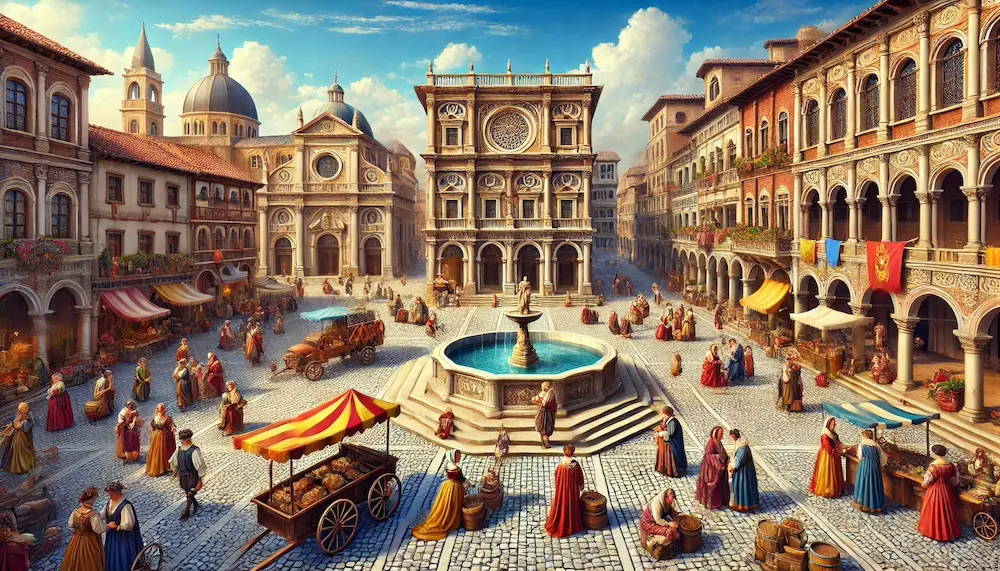Renaissance squares, central to urban life during the 14th to 17th centuries, embody the era’s architectural principles of symmetry, proportion, and a revival of classical antiquity. These public spaces were meticulously designed to reflect the humanist ideals of the Renaissance, serving as focal points for civic, religious, and social activities.
History and Origins of Renaissance Squares
The Renaissance, meaning “rebirth,” marked a renewed interest in the art and architecture of ancient Greece and Rome. This cultural movement began in Italy and gradually spread across Europe. Urban planning during this period emphasized harmonious proportions and geometric layouts, leading to the creation of squares that were both functional and aesthetically pleasing. These spaces often became the heart of city life, surrounded by important civic and religious buildings.
Key Features of Renaissance Squares
- Symmetry and Geometry: Renaissance squares were designed with precise geometric shapes, such as squares or rectangles, ensuring balance and harmony in their proportions.
- Classical Elements: The surrounding architecture often featured columns, arches, and domes inspired by classical Roman and Greek designs.
- Open Spaces: These squares provided open areas for public gatherings, markets, and events, reflecting the communal spirit of the era.
- Integration with Surroundings: Renaissance squares were thoughtfully integrated into the urban fabric, often aligning with important streets and vistas to enhance the city’s aesthetic appeal.
Applications of Renaissance Squares
Historically, these squares served as centers for commerce, political gatherings, and social interactions. They were venues for public ceremonies, markets, and festivals, playing a crucial role in the daily life of the city’s inhabitants. Today, many Renaissance squares continue to function as vibrant public spaces, attracting tourists and serving as reminders of the rich cultural heritage of the Renaissance period.
Considerations When Visiting Renaissance Squares
- Historical Context: Understanding the historical and cultural significance of these squares can enhance appreciation of their design and purpose.
- Preservation Efforts: Many Renaissance squares are protected heritage sites; visitors should respect preservation guidelines to help maintain their beauty and historical integrity.
Conclusion
Renaissance squares are enduring testaments to an era that valued harmony, proportion, and a revival of classical ideals. Their thoughtful design and enduring functionality continue to inspire admiration, offering insights into the urban planning and architectural achievements of the Renaissance.
